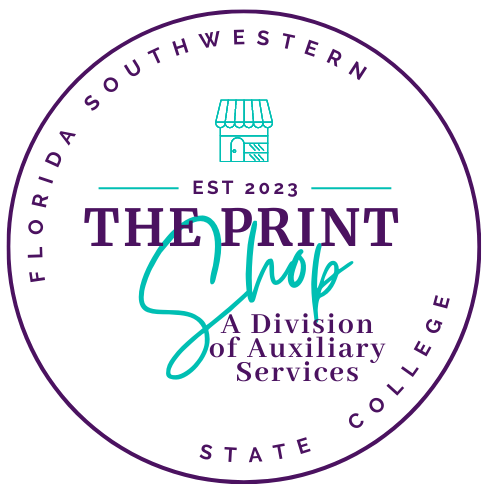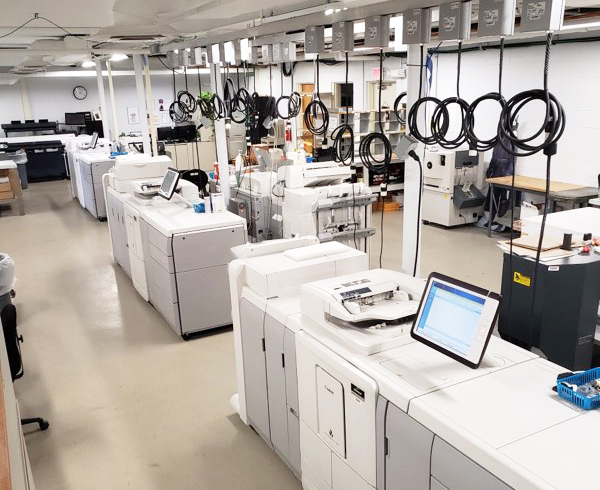Why Every Art Collector Should Know a Print Shop Near Me
The Ultimate Guide to Making Use Of Printing Solutions for Custom Art Prints
Steering through the globe of customized art prints calls for a clear understanding of different printing services. Musicians need to consider variables such as printing methods and products to achieve the wanted result. Each decision, from art work preparation to shade calibration, plays a crucial duty in the end product. As they explore these components, artists can disclose the potential for their job to get in touch with target markets in a purposeful way. What steps can they require to guarantee their prints attract attention?
Understanding Different Sorts Of Printing Providers
Although lots of people might overlook the ins and outs of printing solutions, understanding the different kinds readily available is important for any person looking to produce custom-made art prints. The most typical kinds consist of electronic printing, offset printing, and screen printing. Digital printing is preferred for its fast turn-around and capacity to generate high-quality images directly from digital files, making it perfect for little runs. In contrast, countered printing deals premium photo top quality and is cost-efficient for bigger amounts, making use of plates to move ink onto paper. Display printing, typically used for textiles and promotional items, entails pressing ink with a mesh screen, allowing for vibrant shades and appearances. Each approach has its special advantages and limitations, making it crucial for musicians and developers to evaluate their specific needs, such as quantity, desired quality, and budget, prior to picking a printing service that straightens with their creative vision.
Selecting the Right Materials for Your Prints
Selecting the appropriate materials is crucial for attaining top quality personalized art prints. Comprehending the various types of paper and the significance of ink quality can greatly impact the result. Musicians should think about these factors to guarantee their vision is precisely stood for in the printed piece.
Paper Types Explained
Picking the appropriate paper type is important for accomplishing the wanted aesthetic and longevity in customized art prints. Different options exist, each offering distinctive attributes. As an example, shiny paper boosts shade vibrancy and information, making it optimal for digital photography prints. Conversely, matte paper gives a softer surface, which is more suitable for art work that requires subtlety and appearance. Art paper, frequently made from cotton or alpha cellulose, provides archival top quality and appropriates for duplicating detailed details in paintings (Print Shop Near Me). In addition, specialty documents, such as watercolor or canvas, can include one-of-a-kind aesthetic impacts. Eventually, choosing the appropriate paper kind will greatly affect the last presentation, ensuring that the art work is both lasting and visually attractive
Ink Top Quality Issues
Ink high quality plays an important function in the total success of custom art prints. Premium inks ensure dynamic shades, sharp information, and durability, which are essential for showcasing artistic work. When choosing printing solutions, musicians must take into consideration pigment-based inks over dye-based alternatives, as they supply better fade resistance and shade security. In addition, the choice of ink ought to complement the selected paper kind, boosting the print's visual impact. Environmental factors, such as moisture and temperature, can also affect ink efficiency; consequently, musicians need to ask about ink formulas that withstand these elements. Ultimately, buying superior ink top quality can raise the final item, assuring that the art print holds to the musician's vision for years ahead.
Exploring Printing Methods: Digital vs. Conventional
While both typical and digital printing techniques have their one-of-a-kind advantages, the choice on which technique to utilize often rests on the certain needs of the artwork. Digital printing succeeds in convenience and speed, allowing for quick turn-around times and the ability to publish on demand. This approach is especially useful for musicians who call for one-of-a-kind pieces or tiny runs, as it eliminates the demand for comprehensive configuration processes.Conversely, conventional printing strategies, such as lithography and screen printing, often generate richer shades and structures, appealing to musicians looking for a more genuine and responsive finish. These approaches can improve the depth and top quality of the art work, making them suitable for bigger versions. Additionally, standard approaches may provide a distinctive visual that digital printing in some cases has a hard time to replicate. Eventually, the selection in between these methods need to think about elements like desired high quality, amount, and artistic intent, leading artists to one of the most ideal alternative for their projects.

Preparing Your Art Work for Printing
Successfully preparing art work for printing requires mindful attention to detail, no matter the selected printing method. Artists have to assure that their documents are created at the appropriate resolution, typically 300 DPI, to preserve sharpness and clearness. The right shade setting, normally CMYK for print, is vital to attain the preferred color accuracy. Artists ought to also take into consideration the measurements of the art work, making certain to consist of bleed locations if essential, to prevent any kind of undesirable white sides after trimming.Additionally, documents layouts play a vital function; TIFF and PDF are commonly liked for high-quality prints. Before entry, it's vital to assess the art work for any flaws or unwanted elements. By thoroughly checking these aspects, musicians can improve the likelihood of their prints straightening with their creative vision, inevitably leading to an effective printing outcome.
The Value of Color Calibration and Proofing
Shade calibration and proofing are vital action in the printing procedure, as they ensure that the final result precisely reflects the musician's vision. Proper shade calibration assurances that the colors showed on the screen suit those that will be printed. This process entails adjusting the display setups, printer accounts, and inks to achieve a constant color representation.Additionally, proofing permits artists to sneak peek their job prior to the last print run. This stage allows them to discover and rectify any type of discrepancies in information, color, or saturation, thus decreasing expensive mistakes. By utilizing electronic or hard-copy proofs, artists can make informed choices concerning changes needed for excellent results.Incorporating color calibration and proofing into the printing operations not only improves the top quality of the final product yet also promotes a reliable partnership in between the printing and the artist solution, assuring complete satisfaction and integrity to the initial artwork.
Picking the Perfect Dimension and Format for Your Prints

Advertising and Marketing Your Custom-made Art Prints
Marketing and marketing customized art prints calls for a strong brand name identity to stick out in a competitive market. Efficient on-line promotion approaches and the tactical usage of social media systems can greatly improve presence and engagement. By incorporating these components, artists browse around here can produce an engaging presence that draws in possible purchasers.
Structure Your Brand Identity
Developing a strong brand identification is essential for musicians wanting to successfully market and market their custom art prints. This identity encompasses the musician's one-of-a-kind design, worths, and story, which resonate with prospective purchasers. Artists should develop a cohesive aesthetic existence throughout all platforms, including logo designs, color plans, and typography that reflect their artistic vision. In addition, a clear objective declaration assists interact the artist's objective and interest. Engaging storytelling concerning the ideas behind each item can cultivate emotional connections with the audience. Uniformity in messaging, whether on social media or packaging, enhances acknowledgment and trust. By carefully curating their brand identification, musicians can differentiate themselves in an open market, drawing in devoted clients that value their virtuosity.
Efficient Online Promotion Strategies
What methods can artists employ to effectively advertise their custom-made art publishes online? Developing a specialist web site showcasing the artwork is important. This website needs to include premium images and detailed summaries to involve prospective buyers. In addition, anonymous artists can make use of e-mail advertising by constructing a customer list to share updates, promos, and new launches. Working together with blog owners and influencers in the art neighborhood can expand reach and credibility. Using unique pieces or limited-time price cuts can also develop urgency, motivating acquisitions. Additionally, optimizing material for search engines with relevant key phrases will improve exposure. Finally, preserving a blog site about the creative procedure can attract art lovers, promoting a much deeper connection with the audience and improving the total advertising method.
Making Use Of Social Media Platforms
Social network systems function as powerful devices for artists aiming to market and offer their custom-made art prints. By leveraging platforms like Instagram, Facebook, and Pinterest, artists can display their work to a substantial audience. Engaging visuals and tactical hashtags can raise visibility, drawing prospective customers to their accounts. Regularly posting content, such as behind-the-scenes processes or new designs, helps maintain audience interest and cultivates a sense of community. In addition, artists can utilize targeted advertising and marketing to get to specific demographics, boosting the possibilities of sales. Collaborations with influencers or various other artists can even more magnify direct exposure. Eventually, a well-curated social networks visibility not just promotes customized art prints but also builds a dedicated client base in time.
Often Asked Inquiries

Just how Do I Discover Reliable Printing Company?
To locate dependable printing company, one should research on-line reviews, look for recommendations from peers, compare portfolios, demand examples, and evaluate client service responsiveness. This comprehensive technique guarantees informed decisions and acceptable results.
What Is the Typical Turn-around Time for Custom Prints?
The typical turn-around time for custom prints varies by copyright, however typically varies from a few days to 2 weeks. Factors influencing this consist of order size, intricacy, and the details printing strategies used.
Can I Get a Refund if I'm Not Completely satisfied With My Prints?
The concern of getting a refund view publisher site for unacceptable prints frequently relies on the specific printing service's plans. Many companies use satisfaction assurances, while others might have strict return conditions, emphasizing the relevance of assessing terms ahead of time.
Are There Any Kind Of Hidden Expenses Connected With Printing Providers?
Numerous printing services might consist of covert expenses such as arrangement costs, shipping costs, or service charges for particular products. It's necessary for clients to ask about all possible expenses before settling their order.
Just How Can I Guarantee My Prints Are Eco-friendly?
To guarantee prints are eco-friendly, one must choose environment-friendly inks, recycled paper, and lasting printing practices. Researching printing services that prioritize sustainability and getting certifications can even more guarantee marginal ecological influence in the printing process. Steering via the globe of custom art prints requires a clear understanding of numerous printing services. Lots of individuals may neglect the intricacies of printing solutions, comprehending the various types offered is vital for any person looking to develop personalized art prints. The most common types include digital printing, counter printing, and screen printing. Effectively preparing art work for printing requires mindful focus to information, regardless of the selected printing technique. Prints aimed at galleries could call for standard dimensions to promote framing, whereas one-of-a-kind styles might appeal to collection agencies looking for something distinctive.Lastly, the printing service's capabilities have to be reviewed.